Introduction
In the world of business, crises can strike at any moment, challenging the very foundation of an organization. When faced with such adversity, it becomes crucial for CFOs and financial leaders to take decisive action and lead their companies towards a successful turnaround. This article explores the key steps and strategies necessary to navigate through a crisis and achieve sustainable recovery and growth.
From crisis recognition and assessment to the implementation and execution of a turnaround strategy, each phase is dissected and examined to provide practical advice and solutions. By adopting a confident and action-oriented approach, CFOs can effectively steer their organizations through turbulent times and emerge stronger than ever. So, let's dive in and discover the roadmap to a successful business turnaround.
Crisis Recognition and Assessment
Starting a turnaround necessitates a keen awareness of the crisis and a thorough examination of the underlying issues. A meticulous risk assessment and business impact analysis are indispensable first steps, aligning with the company's goals. This is not a siloed activity; it involves a collaborative effort from various departments—human resources, legal, facilities, IT, security, and finance—all bringing unique insights to the table. The comprehensive plan should account for the effects on the workforce, infrastructure, legal standings, financial health, brand reputation, community, and environmental responsibilities. It's also about setting a critical maximum downtime post-incident and establishing clear communication pathways for stakeholders. With the plan in place, continuous monitoring and iterative testing are essential to reinforce the approach.
Taking cues from Wallace-Woodworth, Manitoba, and Thunder Bay, Ontario, an effective asset management policy can play a significant role in knowledge retention and service enhancement. They exemplify that strategic planning and public engagement are fundamental to adapting to staff turnovers and evolving city demands.
Moreover, James Mohs from the University of New Haven emphasizes the importance of exhausting all avenues before considering bankruptcy, such as refinancing, stock issuance, or other creative financial strategies. It's about being prepared and fostering a culture of adaptability that can pivot in the face of adversity, whether it's a natural disaster or a financial downturn.
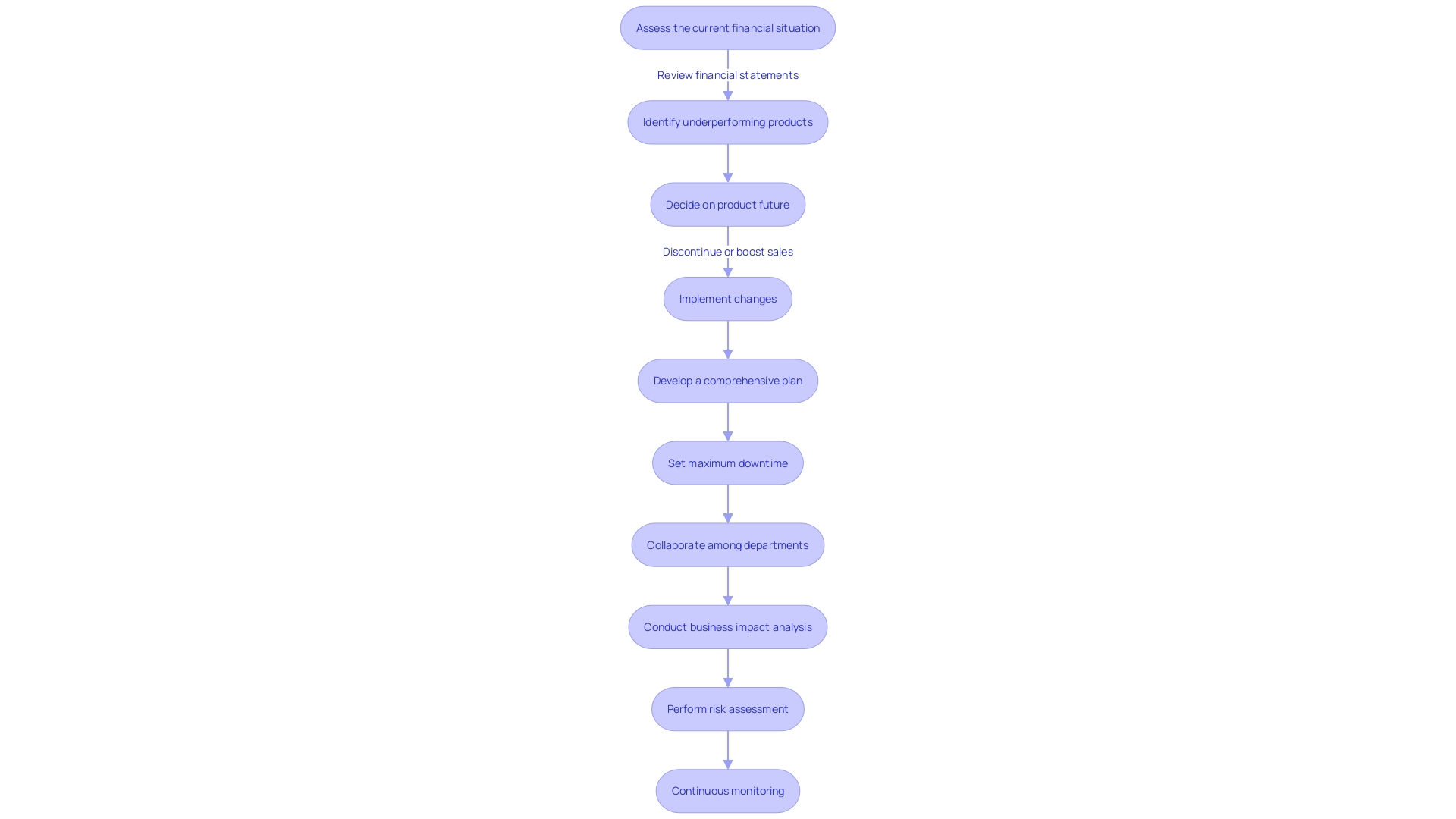
Stabilization and Immediate Action
Recognizing a crisis is only the first step in a sequence of actions vital for a business's survival and eventual revival. Immediate and decisive actions are crucial to stabilize the organization and halt the downward spiral. This includes implementing emergency measures that target critical issues head-on, such as slashing costs, refining cash flow management, renegotiating terms with suppliers, and shoring up liquidity.
For example, Burger King's recent move to invest heavily in marketing and revamp its image is an illustration of a company taking proactive steps to address faltering sales and operational challenges. Such measures are quintessential to not only prevent further financial bleeding but also to lay down a robust platform for recovery strategies to take effect.
Additionally, thorough risk assessments and impact analyses are essential for developing a continuity management (BCM) program. This approach guarantees that an organization is ready for different disruptions, from natural calamities to cyber risks, protecting all aspects of the enterprise, including legal, financial, and reputational elements.
The effectiveness of these stabilization efforts is underscored by the importance of clear and honest communication, as demonstrated in recent brand crises. Transparency with stakeholders, rather than concealing difficulties or overemphasizing successes, fosters trust and is a component of strong leadership during turbulent times.
As enterprises navigate through these challenging phases, embracing a 'Ruthlessly Constructive' mindset can be transformative. This involves a commitment to creative criticism, where the focus is on constructive, solution-oriented discussions that embrace difficult facts and data to navigate towards the most beneficial outcomes for the organization.
In the end, stabilizing the organization is about establishing a secure foundation, upon which customized strategies for a turnaround can be effectively deployed. Whether it is leveraging location to attract more diners as seen in the case of a major branded hotel, or navigating through a complex merger as with Subway's recent acquisition saga, each action taken during the stabilization phase is a stepping stone towards sustainable recovery and growth.
Diagnostic Analysis and Root Cause Identification
To unravel the complexities of a faltering enterprise, a meticulous diagnostic analysis is paramount. This process dissects the business's financial health, operational workflows, market position, and internal proficiencies. For instance, a renowned e-commerce platform faced a perplexing drop in shopping cart conversion rates. By implementing Root Cause Analysis (RCA), the Product Manager identified the underlying issues and formulated a well-thought-out response to this sudden downturn. In a similar vein, financial services and credit licensees reported over 16,000 issues to ASIC, highlighting a systemic failure in breach identification and remediation—a situation that could benefit from a comprehensive RCA to mitigate and preempt future lapses. By using this analytical approach, one can not only overcome existing challenges but also capitalize on unexpected successes to strengthen the organization's resilience.
Formulation of Strategic Turnaround Plan
When undertaking a turnaround, it is essential to create a plan that not only focuses on the immediate challenges but also establishes a path for sustainable growth. This involves a meticulous approach, beginning with a clear definition of objectives that align with long-term ambitions, such as market leadership or operational excellence. A synergistic strategy must then be developed to navigate the organization through its current state towards these objectives. This includes a blend of financial restructuring to stabilize the monetary foundation, operational enhancements to boost efficiency, strategic market repositioning to capture growth opportunities, and a comprehensive talent management plan to ensure the right capabilities are in place.
To ensure the plan's success, it's essential to set actionable goals and establish a timeline for achieving them. This is where key performance indicators (KPIs) play a pivotal role. They serve as a compass, guiding the company towards its objectives and providing a means to measure progress. The significance of KPIs cannot be emphasized enough; as proven by a San Diego County case study, where a concentrated three-pronged plan resulted in a significant milestone of 20,000 employees, highlighting the effectiveness of a focused and measurable approach to organizational change.
Furthermore, the ability to adjust the plan in reaction to changing market conditions is a lesson learned from notable historical events, like the Allied invasion of Normandy, reminding us that a plan must be both sturdy and adaptable. This is further supported by insights from a PwC survey, which links model changes with increased profitability, highlighting the need for dynamic approaches that can accommodate improvements during the process.
It is also worth noting that the transformation journey doesn't end with the implementation of a plan. As suggested by recent statements from Nokia, the continuous alignment of strategies with product launches, growth management, and other key business endeavors is critical to navigating future developments and uncertainties.
Considering these factors, the turnaround plan must not only be all-encompassing but also flexible, backed by robust leadership and a clear vision that can be communicated throughout the organization. This will enable the company to not only address immediate challenges but also to build resilience against future disruptions, ultimately achieving and sustaining performance improvements and securing a lasting competitive advantage.
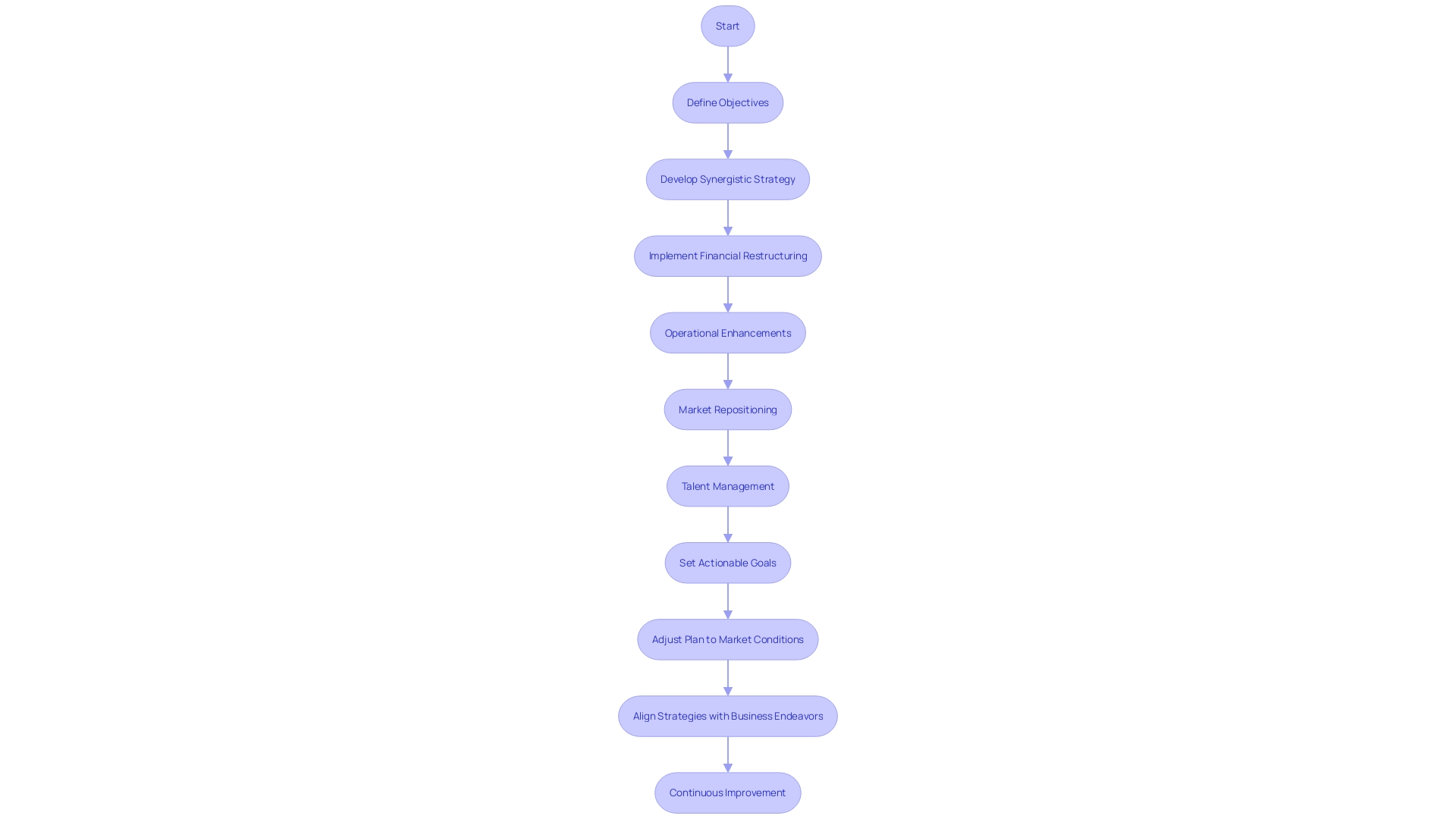
Implementation and Execution of Turnaround Strategy
Starting a turnaround plan is similar to embarking on a high-stakes journey where every step must be deliberate and strategic. The mission begins with a deep dive into restructuring financial commitments, streamlining operations, and reinvigorating marketing and sales tactics, all aimed at propelling business performance to new heights. Such a revival is not just about changing direction in approach; it's about nurturing a culture where clear, concise communication prevails, and where leadership is not just a title but an action, inspiring the entire team towards a unified goal.
A case in point is a city-center hotel whose dining establishment was stagnating despite its prime location. By focusing on the market and leveraging their location, a strategic overhaul was launched, resulting in a swift uptick in food and beverage sales and glowing reviews from guests. This outcome serves as a testament to the power of a well-crafted and executed turnaround strategy.
In the wider commercial landscape, the necessity for change is often driven by the relentless pace of market competition and the pursuit of growth. With nearly 80% of businesses needing to recalibrate their operations every few years to keep up with market dynamics, the stakes are high. Technology advancements are a significant catalyst for this shift, yet keeping pace with such rapid evolution remains a challenge for many.
The successful execution of a turnaround strategy hinges on understanding the nuances between change and transition. Change is the tangible actions taken, such as the adoption of new technologies or shifts in company culture. Transition, however, is the psychological process that individuals within the organization undergo as they adapt to these new circumstances. It's a nuanced journey, encompassing mergers, leadership overhauls, and cultural shifts, requiring not just an operational pivot but a collective mindset shift as well.
As echoed by industry leaders, the essence of a successful transformation lies in the clarity of its vision and the effectiveness of its communication. Memos, with their structured approach of addressing the 'Now, next, and then,' are particularly potent in aligning teams and reducing ambiguity. This aligns with Amazon founder Jeff Bezos' practice of demanding narrative memos for important updates, emphasizing the need for clear and effective communication to foster a shared understanding and purpose.
In essence, the execution of a strategic turnaround is not a solitary venture but a concerted effort that demands a multi-disciplinary approach, clarity of purpose, and unwavering commitment to see the plan through to fruition.
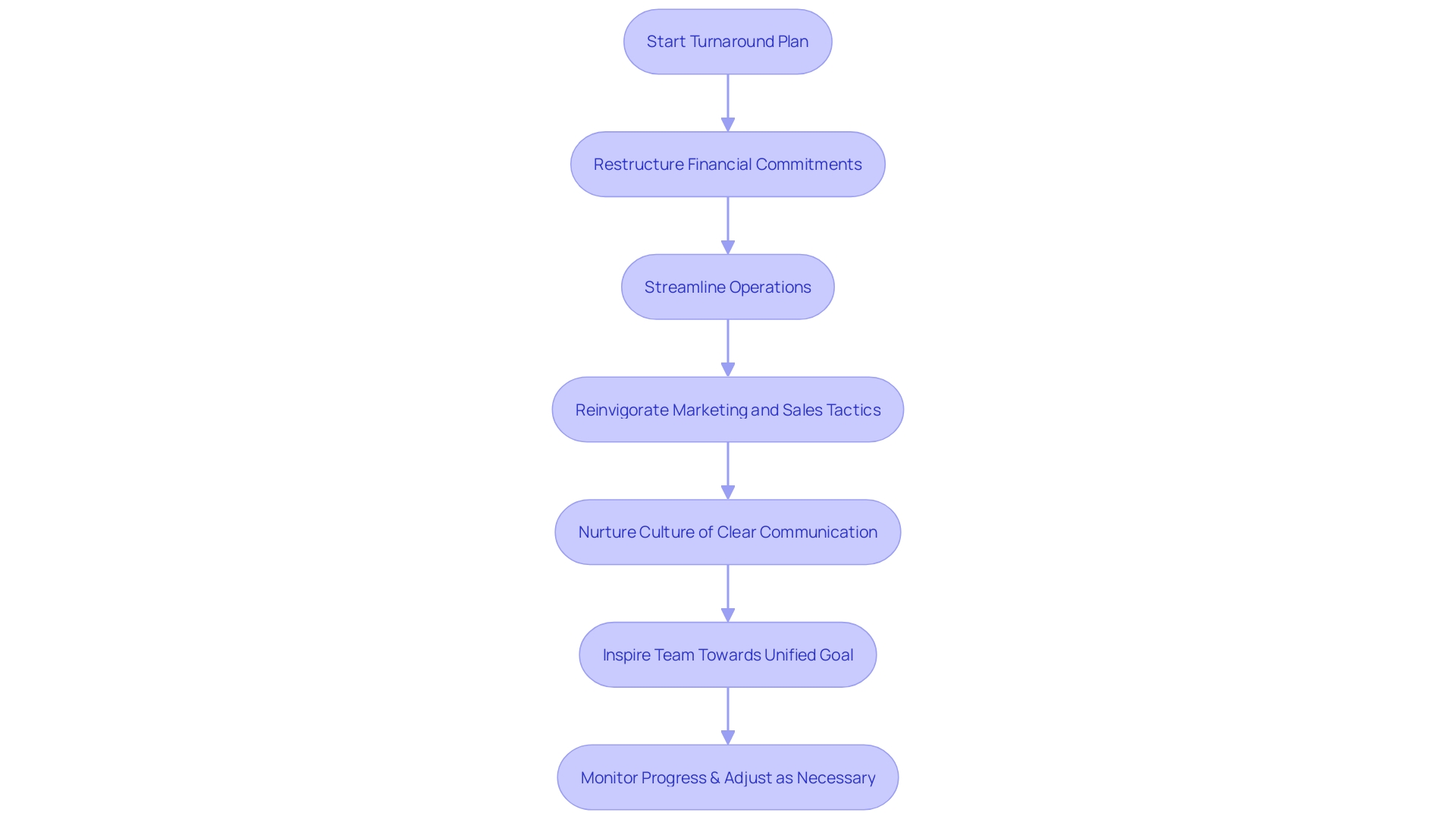
Monitoring, Control, and Adjustment
While organizations maneuver through the intricacies of a turnaround, the significance of vigilance in monitoring progress cannot be overstated. The journey of John Dee, a company that underwent a significant transformation, exemplifies the multi-staged approach required for a successful enterprise revamp. Starting from an initial analysis to understand the current state and future needs, John Dee moved through tailored design levels and developed alternative concepts to address their unique challenges. This highlights the necessity of a dynamic strategy that is not only well-planned but also adaptable to change.
By closely monitoring key performance indicators and using advanced analytics, companies can gain a clearer picture of their operational efficiency and make informed decisions. This is crucial in identifying any deviations from the planned course and enables timely adjustments. Learning from the experiences of John Dee, which saw a surge in demand and outgrew its manual operations, it is clear that a lack of visibility and limited tracking can lead to inefficiencies. On the other hand, embracing digital transformation and considering regenerative models can lead to a more sustainable, agile, and responsive operational framework.
The utilization of external data, AI, and advanced analytics is instrumental in regenerating systems for not only speed but also for adding value back into society. This approach ensures that as organizations evolve, they do so with a perspective that is broader than mere resilience; they proactively contribute to the environment and public sector, fostering a culture of sustainable growth and full potential realization.
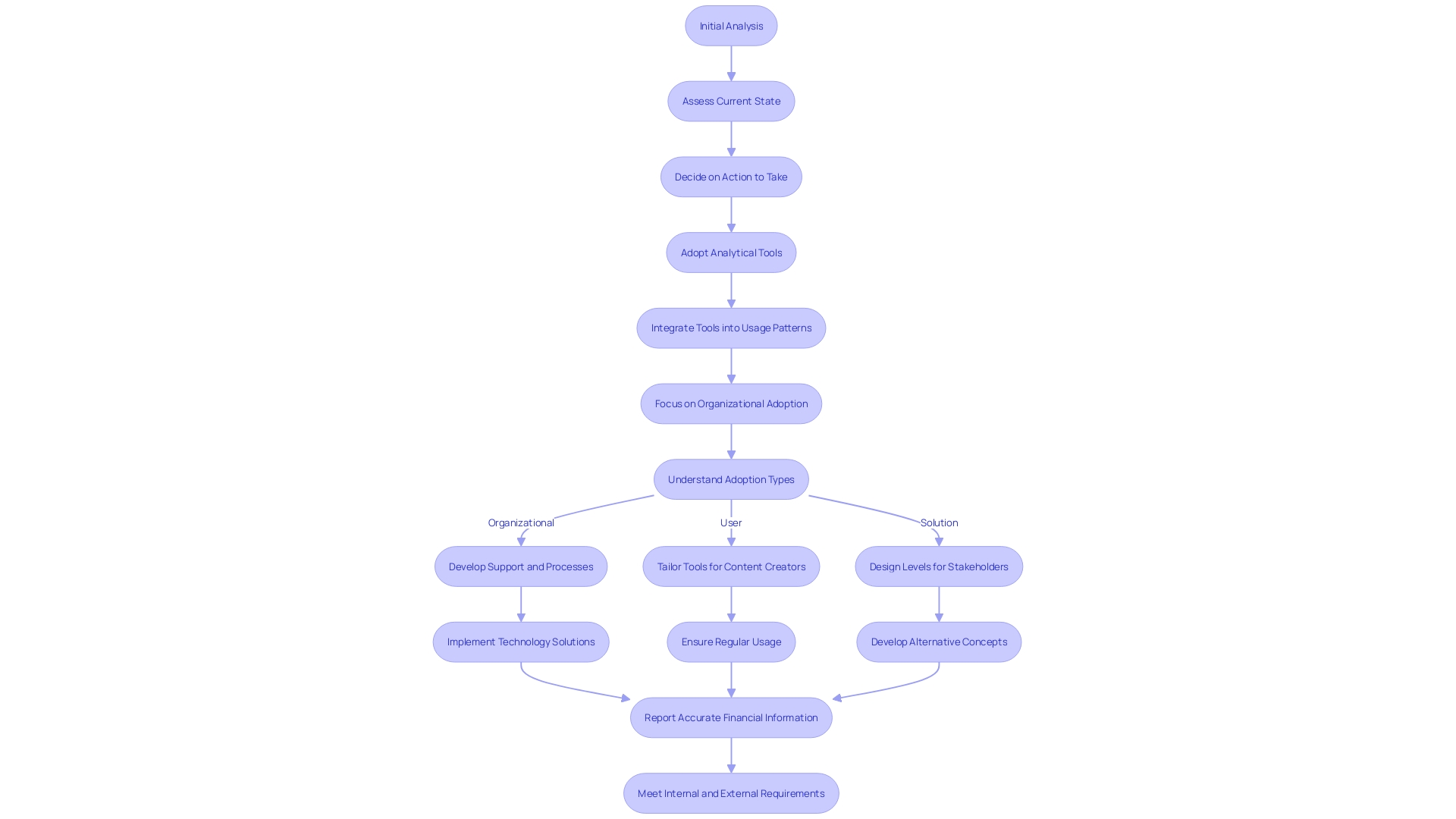
Consolidation and Growth
With an enterprise now on the path to recovery, the next strategic phase is to harness the solidified financial and operational base for sustainable growth and enhanced profitability. It’s essential to seize on this momentum by expanding into fresh markets and creating cutting-edge products or services, while also nurturing customer relationships and fostering talent development. It's a process exemplified by organizations like Tech Ladies, which started as a small meetup and developed into a multi-million dollar community enterprise. The company's progression from a meetup of women in tech to a successful enterprise with over 200,000 members showcases the effectiveness of a well-implemented growth plan. To replicate such achievements, it is essential to stay alert to market trends and be prepared to adjust strategies accordingly. This dynamic approach not only keeps an enterprise competitive but also allows it to make the most of new opportunities that arise.
Kodak's tale serves as a cautionary example of the cost of overlooking exponential change and the importance of preparing for sustainable growth. An enterprise must possess the essential capabilities and leadership to consistently construct and grow. According to recent economic analyses, trends in labor, politics, technology, and demographics are key indicators of how businesses evolve and succeed. Serial launch capabilities, strategic assets like intellectual property, data, brand strength, and a culture of innovation are all vital components. However, numerous major corporations face challenges in effectively utilizing these assets, emphasizing the importance of a strong plan for expansion.
To drive this growth, it's essential to follow the advice of industry leaders who stress the importance of value maximization over mere profit maximization. Their expertise aids companies in navigating intricate environments, devising plans, and predicting upcoming patterns. This approach is further supported by statistics showing the significance of research and development (R&D) investment, job creation, and employment dynamism as indicators of a healthy economic environment. Nevertheless, a recognized decrease in employment dynamism throughout the economy necessitates organizations to be proactive and thoughtful in their growth strategies. By being 'Ruthlessly Constructive' and embracing creative criticism, businesses can identify and address challenges head-on, paving the way for success and longevity.
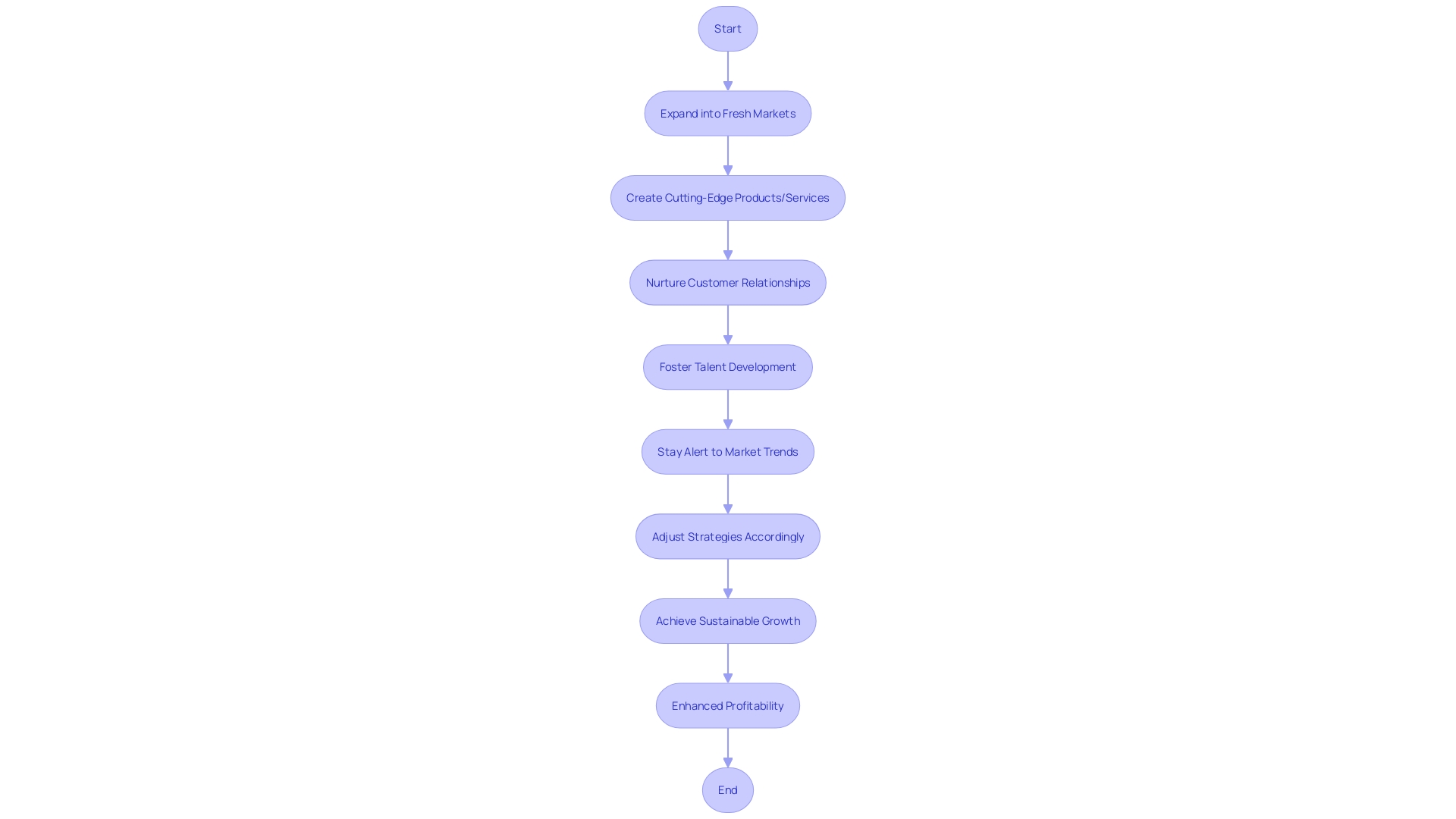
Conclusion
In conclusion, successfully navigating a business crisis and achieving a turnaround requires a confident and action-oriented approach. By recognizing and assessing the crisis, implementing immediate stabilization measures, conducting diagnostic analysis, formulating a strategic turnaround plan, and executing it with precision, CFOs and financial leaders can lead their organizations towards sustainable recovery and growth.
Collaboration across departments is crucial during the crisis recognition and assessment phase, as it helps develop a comprehensive plan that considers the impact on all aspects of the business. Continuous monitoring and iterative testing strengthen the strategy's effectiveness.
Stabilization and immediate action involve implementing emergency measures, such as cost-cutting and cash flow management, while transparent communication and strong leadership foster trust and resilience during turbulent times.
Diagnostic analysis and root cause identification unravel the complexities of a faltering business, enabling organizations to resolve challenges and leverage unexpected successes.
A well-crafted strategic turnaround plan sets clear objectives, develops a synergistic strategy, and establishes actionable goals with measurable key performance indicators (KPIs) to track progress. Agility and adaptability are essential, as the plan must be robust yet flexible to respond to evolving market conditions.
Executing the turnaround strategy requires deliberate actions, clear communication, and a culture of unity. Change and transition go hand in hand, ensuring both operational shifts and a collective mindset shift within the organization.
Monitoring progress, exercising control, and making timely adjustments are crucial for success. By closely tracking key performance indicators and leveraging advanced analytics, organizations can adapt to change and maintain a responsive operational framework.
Consolidation and growth mark the next phase, where organizations capitalize on the momentum gained during the turnaround. Expanding into new markets, fostering innovation, nurturing customer relationships, and investing in talent development contribute to sustainable growth and enhanced profitability.
By adopting a confident and action-oriented approach, CFOs can guide their organizations through crises, emerging stronger than ever. Decisive action, clear communication, and strategic resilience are the keys to achieving sustainable recovery and growth.
Take decisive action and guide your organization through crises to emerge stronger than ever.




